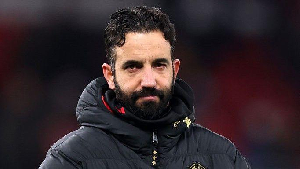The free Senior High School policy introduced by the Akufo-Addo government started in September 2017.
In this policy, every child in Ghana who qualifies for, and is placed in a public Senior High School for his secondary education will have his/her fees absorbed by the government.
The implementation of the free SHS policy has resulted in a massive increase in enrolment, making students who could not have continued their education after basic school having the opportunity to continue. The first batch of students to have enjoyed the 3 years free SHS were to complete June 2020 if not for the novel coronavirus pandemic.
Like any other policy, the free SHS needs continual evaluation, pruning and tweaking here and there to improve and make it better for the nation and beneficiaries. One area this article seeks to bring the attention of the handlers of free SHS to is the necessity of bringing back cut-off point in placing students in Senior High School for free education.
Cut-off point or score according to the glossary of education reform, is the lowest possible score on an exam, standardized test or other form of assessment that a student must earn to either ‘pass’ or be considered ‘proficient’ for selection and placement.
Introducing cut-off points in selection of Basic Education Certificate Examinations (BECE) candidates to enjoy free SHS means that an aggregate score is going to be set as the lowest possible mark a student should obtain in the BECE before that student can be placed in a Senior High School to benefit from the free SHS.
This is what used to be done before free SHS was introduced and we need to go back to it for the following reasons:
Quality of Students Placed into SHS
Senior High School is supposed to continue and build on the foundations given to students at the basic level. The cut-off point is necessary if we are to feed the SHSs with quality students who have the good foundation for SHS education to build on.
Because of the absence of cut-off points, most basic school students are not challenged to put much effort in their academic work. This is because they know that whatever grade they obtain in the BECE, it is highly possible they are going be placed in an SHS to enjoy free education. They are therefore not challenged to put in their best as they would if they knew they won’t enjoy free SHS if they don’t make a certain grade point. As avowed by Frank Knoll; “the brain needs to be regularly challenged in order to attain its uttermost performance.”
Such students will go to SHS not prepared and with a weak grasp on fundamental concepts he/she was supposed to have before secondary education. Most of these students because of their poor academic background are hardly able to commit to learning at the SHS. They find it difficult adapting to learning and are mostly truants who are found engaging in recalcitrant behaviour. These students who are mostly ‘dumped’ in deprived schools become a liability in those schools making the work of teachers even more difficult.
SHS teachers have syllabi and timeframe within which these syllabi must be completed. If students are placed in SHS who do not have the required basic knowledge and skill expected of a students who has completed basic school, teachers cannot concentrate on the core SHS syllabi within the 3 year SHS period.
If we continue flooding our SHS with ill prepared students, they are also going to come out ill prepared and we cannot blame SHS teachers as they cannot use the 3 years in SHS to fix the gap from JHS before teaching SHS syllabi. This can lead to a situation of ‘garbage in garbage out’ at the SHS level with students completing but not benefiting academically from free SHS except the dining hall food and stationary given to them. The ministry of education should therefore not complain or blame SHS teachers when students come out with poor grades. They are the originators of the problem.
Commitment to Studies at Basic level
If students are aware that they have to meet a certain grade point without which they will not be placed in SHS, they are going to be motivated to take their class lessons and personal studies seriously. An awareness of cut-off point before one enjoys free SHS will help solve truancy and lackadaisical attitude of some BECE candidates. The fact that there is no challenging cut-off point has made some students lazy.
Before free SHS, some grades were regarded as not good enough and it made BECE candidates sit up and take their studies seriously. But now grades ranging from 38 – 48 which previously never gave others opportunity to even pay fees to be in SHS are now found in free SHS. If a cut-off point of aggregate 30 is set for example and students are preconditioned that they have to make that grade else they cannot enjoy free SHS, it will bring some level of seriousness, urgency and commitment in the way learners take their studies at the basic level.
Teachers and parents are also going to be committed and put in much effort to make sure students excel. Basic school teachers like to see most of their students in SHS and are happy when that happens. Knowing that a cut-off point exists will push them to do more so students will meet it and be able to continue their education to SHS.
If parents know that for their children to enjoy free SHS, a certain grade point must be obtained, they are going to provide all the necessary support and commitment needed by children to obtain that grade so their children can also enjoy free SHS.
Putting Resources to Efficient Use
Millions of cedis that could have built hospitals, construct good roads and provide portable water are being invested in the free SHS every year. It is right that citizens who are also stakeholders in these money demand value for money. We must ensure our hard earned resources as a country are spent on students who are willing and committed to learning. Education is an investment and no investor will invest in an unprofitable venture or invest without looking at prospects.
The reality we face without cut off point is that there are a number of SHS students who doesn’t even understand the sacrifices the nation is making for them to have education or their reason for being in SHS. They have become a liability in the various SHS and the government keep spending the nation’s resources on them every semester.
A cut off point will ensure that resources are channelled to push those who are good and ready to climb the academic ladder and also to identify students who can pursue vocational and technical training and those who can learn skilled work. These resources can also be used to expand existing facilities.
Investing in the citizenry by providing free education to improve the literacy rate of the nation is a great thing; however, those who benefit must be students who have the prospect. The wholesale placement into SHS will not only dilute the quality of SHS education and students produced but also cause financial loss to the state. At the end, the country is not going to benefit from the education it intended to give these children for the ultimate good.
Universities use cut-off points to prune and properly place students and bringing it back to basic education will enhance the free SHS rather than mar it. Students who don’t meet the cut-off point should not be neglected, rather, they should be given the opportunity to learn and rewrite BECE just like Nov/Dec WASSCE. They can then be placed to enjoy free SHS the next year when they meet the cut-off point.
Cut-off point is not to deny students opportunity to be educated. It’s good for the student as well as the state. It shows the proficiency and readiness of a learner to pursue studies at a certain level. Financial support in education is not just for the needy but also brilliant. In as much as we want to improve the illiteracy rate of the nation, we can’t just be wasting resources on students who themselves are not interested nor ready to receive the education we are giving them.
As the president has given permission for JHS 3 students to return to school and prepare for their BECE, it is important that candidates are made aware of the introduction of cut–off point in the selection and placement into SHS so they can prepare accordingly.
Opinions of Wednesday, 3 June 2020
Columnist: Solomon Nana Kwame Ansong















